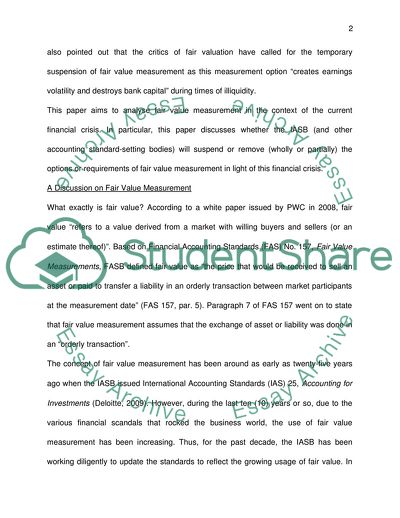Cite this document
(A Discussion on Fair Value Measurement Term Paper, n.d.)
A Discussion on Fair Value Measurement Term Paper. https://studentshare.org/finance-accounting/1723081-as-a-result-of-the-current-financial-crisis-will-the-iasb-totally-or-partially-remove-fair-value-measurement-options-or-requirements-from-accounting-standards
A Discussion on Fair Value Measurement Term Paper. https://studentshare.org/finance-accounting/1723081-as-a-result-of-the-current-financial-crisis-will-the-iasb-totally-or-partially-remove-fair-value-measurement-options-or-requirements-from-accounting-standards
(A Discussion on Fair Value Measurement Term Paper)
A Discussion on Fair Value Measurement Term Paper. https://studentshare.org/finance-accounting/1723081-as-a-result-of-the-current-financial-crisis-will-the-iasb-totally-or-partially-remove-fair-value-measurement-options-or-requirements-from-accounting-standards.
A Discussion on Fair Value Measurement Term Paper. https://studentshare.org/finance-accounting/1723081-as-a-result-of-the-current-financial-crisis-will-the-iasb-totally-or-partially-remove-fair-value-measurement-options-or-requirements-from-accounting-standards.
“A Discussion on Fair Value Measurement Term Paper”. https://studentshare.org/finance-accounting/1723081-as-a-result-of-the-current-financial-crisis-will-the-iasb-totally-or-partially-remove-fair-value-measurement-options-or-requirements-from-accounting-standards.


